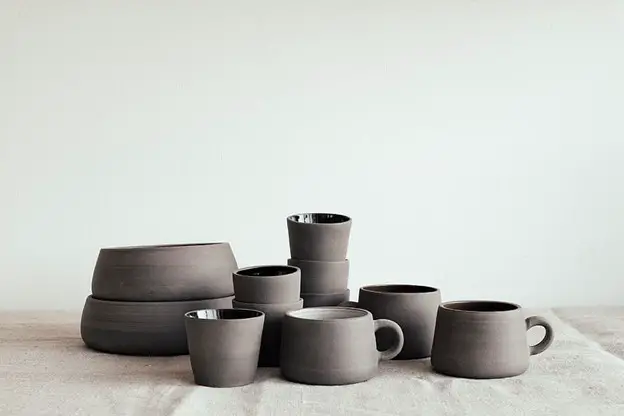Pottery artists usually apply glazes to their artwork to add some extra shine and make their pieces pop. However, glazes do much more than just shine. Depending on the clay used, they can impart strength to your pottery piece while making it waterproof or at least water-resistant. However, each potter has their style. While some love the shiny reflective surface created by a glaze, others love to keep things subtle with matte glazes. So, how are these matte glazes different from the glossy ones? And what are the best options available in the market? Let us decode the answers to these questions!
What Is A Matte Pottery Glaze?
Generally, one would think that a matte glaze is just a dull version of a glossy glaze. However, that might seem true, but it isn’t the case. Depending on the formulation, Matte glazes can be equally bright compared to gloss glazes. Here brightness refers to the light reflected from the surface. However, in the case of matte glazes, the light is reflected in a scattered form. This is because matte glazes don’t have a super-smooth exterior as compared to the glossy glaze options.
However, this difference is microscopic, and you can still feel that the matte option is smooth when you touch the surface. Moreover, the colors on matte pottery glaze are just as bright and vibrant as they are on a glossy surface. It is just that the amount of light being reflected in the latter case is better, which makes it look shiny.
So, if you plan on using matte glazes for your pottery work, here are some options you can experiment with.
1. Penguin Pottery Black Matte Glaze:
Black looks best in matte is something most pottery artists would agree. The Penguin Pottery Black Matte Glaze is the perfect choice for beginner artists who love to work with low-fire and mid-fire glaze variants. This high-quality matte glaze can easily be fired from Cone 5 to 6, depending on the pottery piece’s desired color. Depending on how high temperature the clay has been fired at, you can also see some shades of beautiful brown with this matte glaze. Also, keep in mind that the final output will vary depending on the clay being used, and the color can range from lighter to darker.
2. Amaco Matte Glaze:
If you are looking for a brighter mood for your pottery clay, the Amaco Matte Glaze, available in white color will do that for you. When fired from Cone 5 to 6, this matte glaze gives off a beautiful white hue with some satiny effects as well. Amaco Matte Glaze is also formulated to be used in a spray can for even distribution if you aren’t good with brushing glaze on your pottery piece. Moreover, it is formulated to be non-toxic and is completely dinnerware safe.
3. Mayco Matte Glaze:
The Mayco Matte Glaze is the perfect matte glaze for beginner crafters who love working with stoneware. Formulated especially for this particular clay variant, this glaze gives off a beautiful white creamy base when fired right with speckles of dark brown. The user-friendly application process helps in layering whether you use the dunking method, brushing, or spray glazing. While it works best on stoneware, it can also be used on other clay variants with a firing cone range between 5 and 10.
Advantages Of Using Matte Glaze
While the final choice would depend upon your personal preference, most potters love to use matte glazes for the richness they bring to the artwork. Matte imparts better visual character backed by intense variegation and color. Moreover, it doesn’t show fingerprints or brush marks as compared to the glossy ones, which makes it a great choice for beginner crafters who struggle with imperfections.
Conclusion
When choosing a matte pottery glaze for your pottery-making needs, make sure you also consider whether it is low-fire, mid-fire, or high-fire glaze. As a beginner, it is better to stick with low-fire or mid-fire glazes. A great option among the ones mentioned above is the Penguin Pottery Glaze which is a high-quality mid-fire pottery glaze that imparts a beautiful shade without any gloss. Make sure you test out your clay which would work best with matte glazes, as the result can vary depending on the base material.







